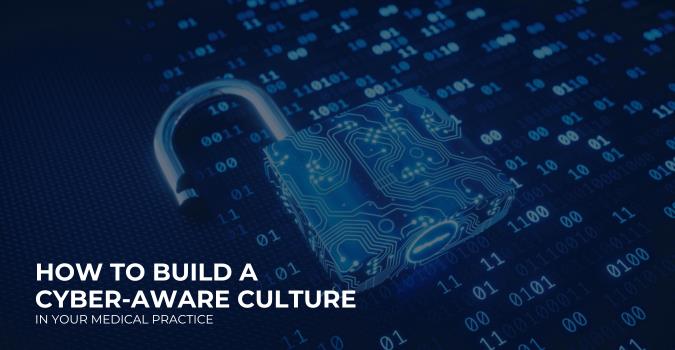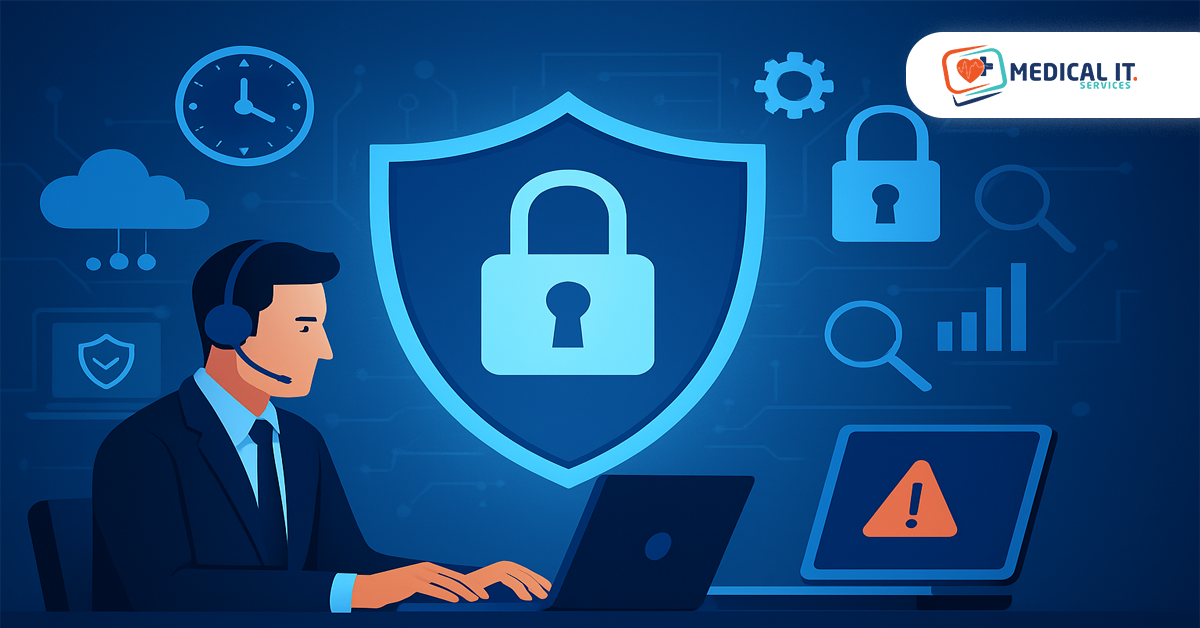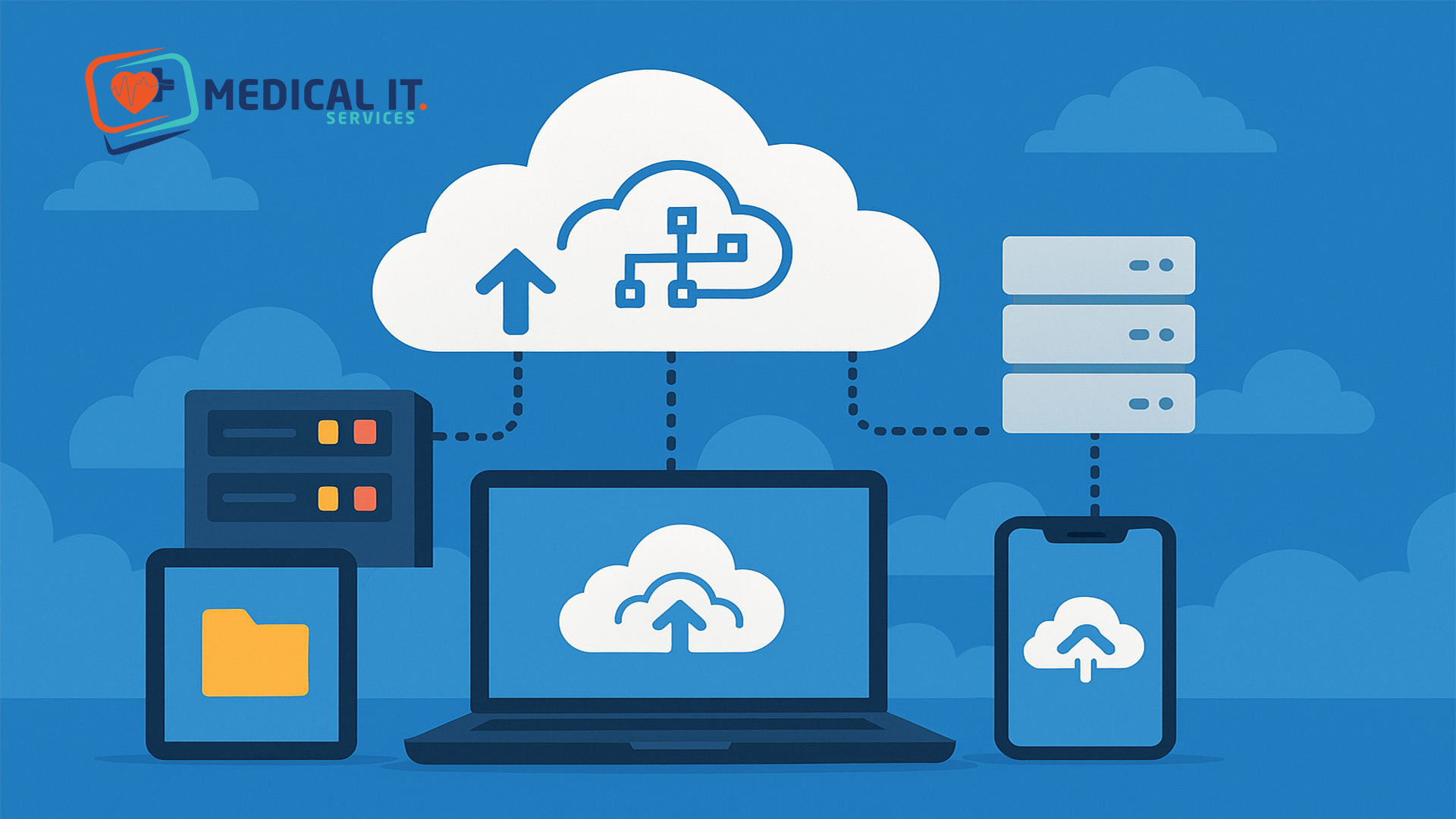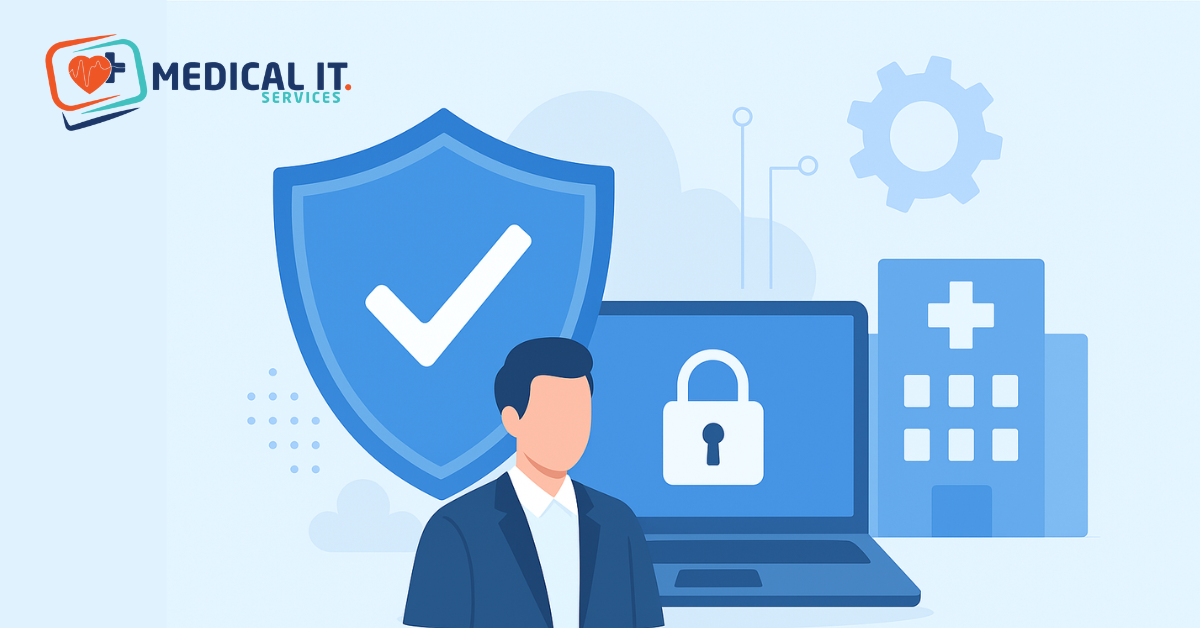In a time when online risks change every minute, and digital operations never stop, having…

How to build a cyber-aware culture in your medical practice
In today’s digital healthcare environment, cybersecurity is not just an IT issue, it is a business priority. Medical practices hold highly sensitive patient data, making them prime targets for cyberattacks. Building a cyber-aware culture within your practice is essential to protect your patients, reputation and operations.
Here’s how medical centres can start creating a stronger, cyber-aware workplace:
1. Leadership Sets The Tone
Cybersecurity culture begins at the top. When leadership takes cybersecurity seriously, the entire team follows. Management must actively support policies, participate in training and allocate necessary resources towards cybersecurity initiatives.
2. Implement Regular Staff Training
Human error is one of the biggest cybersecurity risks. Conduct regular, mandatory training sessions to teach all staff, from receptionists to clinicians and how to identify phishing attempts, secure their devices and report suspicious activity. Short, focused training every quarter can significantly reduce risks.
3. Promote Good Cyber Hygiene Daily
Simple practices make a big difference. Encourage habits such as:
- Locking screens when stepping away
- Using strong, unique passwords
- Avoiding personal device use on work networks
- Double-checking email senders before clicking links or attachments
Visual reminders like posters and screen savers can reinforce good habits.
4. Establish Clear Cybersecurity Policies
Every staff member should know:
- What devices and applications are approved
- How to report an incident
- Rules around handling patient data create simple, accessible policies and update them annually or after major changes in your IT environment.
5. Enforce Multi-Factor Authentication (MFA)
MFA adds an extra layer of security to your systems. All critical applications, like practice management software, email and cloud storage, should have MFA enabled to protect against unauthorised access.
6. Conduct Simulated Phishing Exercises
Testing your team’s awareness with safe, simulated phishing campaigns can highlight weaknesses and improve response times. It also normalises cautious behaviour around emails and external links.
7. Reward system
Recognising staff members who demonstrate strong cybersecurity practices reinforces the right behaviour. Monthly awards, shout-outs or small incentives can help foster a proactive culture.
Conclusion
Building a cyber-aware culture is an ongoing process, not a one-time project. By investing in education, leadership commitment and daily vigilance, healthcare organisations can significantly strengthen their defences and maintain the trust patients place in them.
A safer practice is a smarter practice and cybersecurity is everyone’s responsibility.



